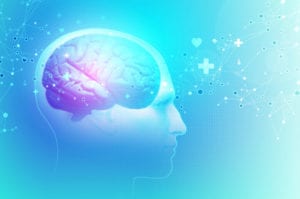Neurofeedback therapy is a biofeedback technique that focuses on helping a person learn to directly affect their own brain function. The approach is a reputable and scientifically proven technique practiced by specially trained psychotherapists.
Drawing on the growing knowledge from the field of neuroscience, doctors are trying to reach beyond the symptoms of mental illness to address the circuits that cause them.
What is Neurofeedback Therapy?
Neurofeedback, also known as EEG biofeedback, is a gradual therapeutic learning process that works by providing feedback to an individual about their brainwaves. A trained professional, acting as a supportive guide and teacher, conducts the neurofeedback treatment session.
Electrodes are applied to the individual’s scalp (in some cases finger sensors can also be used), which allow both the client and therapist to observe brainwave activity. Shaving or hair removal is not necessary for the electrode placement, and they are not painful. The particular locations and frequencies that neurofeedback electrodes target are specific to the client’s condition or disorder.
While their brain activity is monitored, the individual undergoing treatment is given information about their brain activity and is rewarded for patterns that are better or healthier for them. This is referred to as self-regulation, because the individual is learning how to regulate actual brainwave patterns on their own, without medications or additional therapy.
The idea behind neurofeedback is that you can gain more control over your health by harnessing the power of your mind and becoming aware of what’s going on inside your body. In order to shape brain activity toward desirable and more-regulated functioning, the process requires multiple sessions, typically from 15-35, before measurable results are achieved.
What Conditions Can Be Treated with Neurofeedback Therapy?
As a therapeutic treatment for the brain, the potential application of neurofeedback is quite broad. It can be used to treat the faulty brain wave activity associated with various conditions, such as learning disabilities, autism, anxiety, sleep disorders and chronic pain. Here are a few specific examples:
- Eating Disorders: Eating disorders have the highest mortality rate and are one of the most difficult of all mental illnesses to treat. Neurofeedback allows retraining of the brain, which encourages good dietary decisions and enables the client to overcome addictive behaviors or unhealthy cravings.
- Attention-Deficit Hyperactivity Disorder (ADHD): A clinical trial involving 104 children published in the Journal of Pediatrics showed that those who received neurofeedback had improvements in attention and impulse control that persisted even after six months. The children who did not receive neurofeedback therapy did not show the same improvements.
- Post-traumatic Stress Disorder (PTSD): Several small studies have been conducted treating veterans with neurofeedback for PTSD, with very promising results.
- Depression: Studies indicated that a person’s mood is positive when the left frontal area of the brain is more active than the right frontal area, and that your mood is poor when the right is more active than the left. This well-attested fact is directly applied in treatment with neurofeedback. Three controlled studies showed that mood was improved in college students when the left front side of the brain was trained to be more active than the right. One study showed that patterns of thinking also changed. Neurofeedback for depression resulted in more positive thinking patterns and a reduction in ways of thinking that have been associated with depression.
- Parkinson’s Disease: This disease presents with a wide variety of symptoms, ranging from hand tremors to facial immobility. While not a cure for this brain disorder, neurofeedback has shown remarkable results in helping manage the symptoms of Parkinson’s disease.
The Advantage of Neurofeedback Therapy
The mind/body connection is an important aspect of overall health and well-being. This connection is usually severed, at least to some degree, in people with addictions or mental illnesses. Neurofeedback can help you reconnect with your body and your emotions as it teaches you to stabilize your brain.
When you become aware of how your brain is working and how it should work, you are given the ability to better adapt and adjust to your emotions and bodily sensations, even if they are unpleasant. By learning to direct your thoughts and control things that initially seemed uncontrollable, you gain an advantage in responding to the symptoms of your disorder. A properly functioning brain helps you realize that you really can move through pain, discomfort, cravings and more as you work toward calm, pleasant and healthy thinking.











